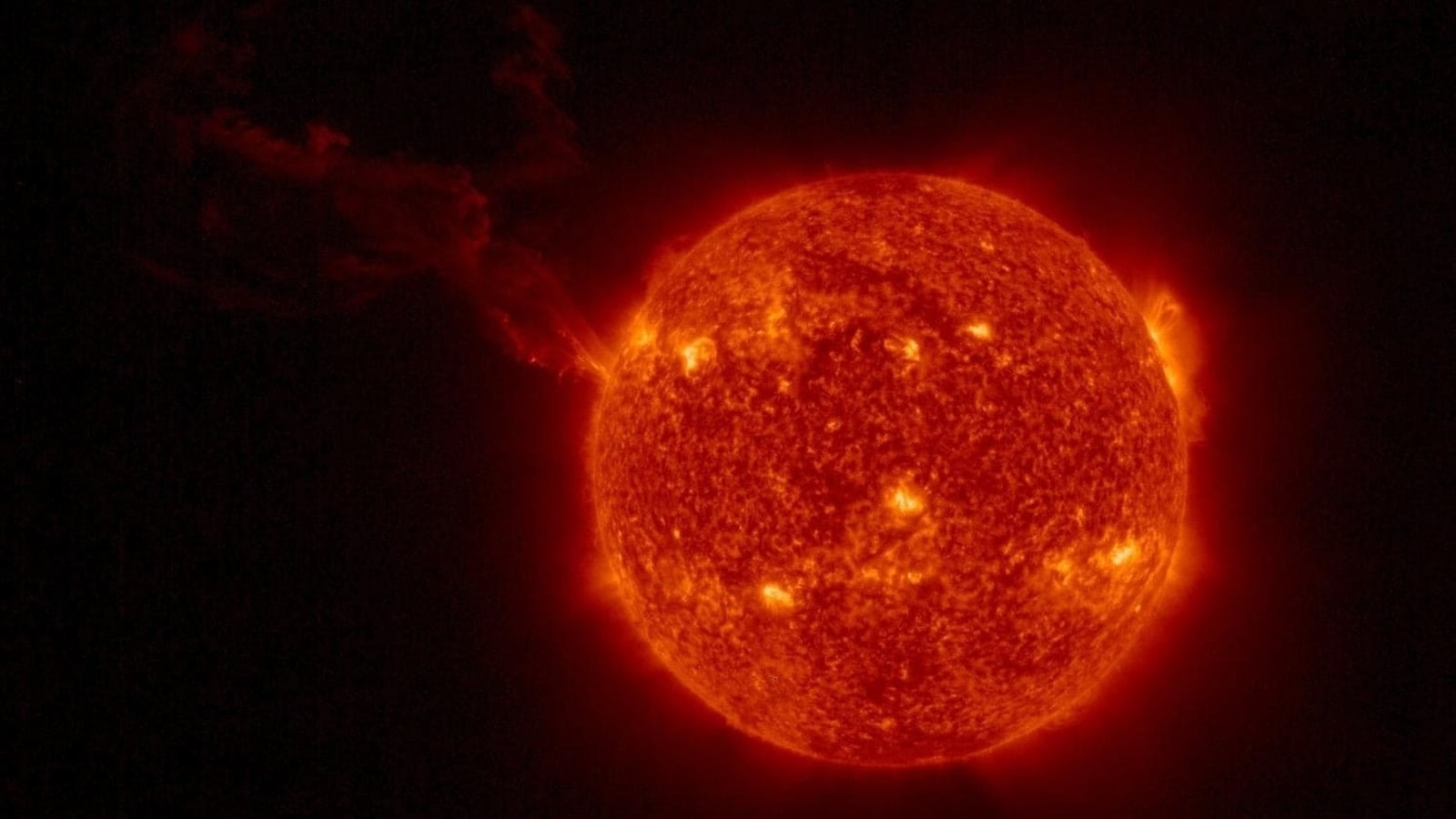ISRO Spacecraft Heads Towards Center of Solar System to Spy on the Sun
New Delhi, India - The Indian Space Research Organisation (ISRO) spacecraft Aditya-L1 is on its way to the center of the solar system to study the Sun. The spacecraft was launched on September 2, 2023, and is expected to reach its final destination, Lagrange point 1 (L1), in January 2024.
Exploring the Solar System's Heart
L1: A Unique Location for Sun Observation
L1 is a point in space where the gravitational forces of the Sun and Earth balance out. This makes it a good location to study the Sun without being affected by Earth's gravity or atmosphere.

Aditya-L1's Scientific Arsenal
Aditya-L1 is carrying seven scientific instruments that will study the Sun's atmosphere, including the corona and chromosphere. The spacecraft will also study the Sun's magnetic field and solar flares.
A Quest for Knowledge
The data collected by Aditya-L1 is expected to help scientists better understand the Sun's activity and its impact on Earth. This information could be used to improve space weather forecasting and to develop new technologies to protect satellites and other spacecraft from solar radiation.
Significance of the Aditya-L1 Mission
India's Solar Science Leap
The Aditya-L1 mission is significant for several reasons. First, it is India's first dedicated mission to study the Sun. This is a major milestone for the country's space program and demonstrates its growing capabilities in solar science.
Illuminating Insights
Second, the Aditya-L1 mission is carrying seven state-of-the-art scientific instruments that are expected to provide new insights into the Sun's activity and its impact on Earth. This information could be used to improve space weather forecasting and to develop new technologies to protect satellites and other spacecraft from solar radiation.
A Collaborative Endeavor
Third, the Aditya-L1 mission is a collaborative effort between ISRO and several Indian academic institutions. This collaboration is helping to build India's capacity in solar science and to train a new generation of solar scientists.
Conclusion
In conclusion, ISRO's Aditya-L1 mission represents a significant achievement for India and the field of solar science. As it embarks on its journey to the heart of the solar system, it promises to unveil critical insights about the Sun's behavior and its effects on our planet. This mission not only showcases India's burgeoning expertise in space exploration but also paves the way for advancements in space weather forecasting and satellite protection.
FAQs
1. Why is studying the Sun important? Studying the Sun is crucial because it helps us understand space weather, which can affect satellite communication and even power grids on Earth.
2. How will Aditya-L1 protect itself from the Sun's radiation? Aditya-L1 is equipped with advanced shielding and instruments designed to withstand and study solar radiation.
3. What is the Lagrange point 1 (L1)? L1 is a stable point in space where the gravitational forces of the Sun and Earth balance, making it an ideal location for solar observation.
4. What can we learn from studying the Sun's magnetic field? Studying the Sun's magnetic field can provide insights into solar activity and its potential impacts on Earth.
5. Is the Aditya-L1 mission only about science, or does it have practical applications? While primarily a scientific mission, the data gathered by Aditya-L1 can have practical applications, including improving space weather forecasts and safeguarding satellites.
.png)
.png)
